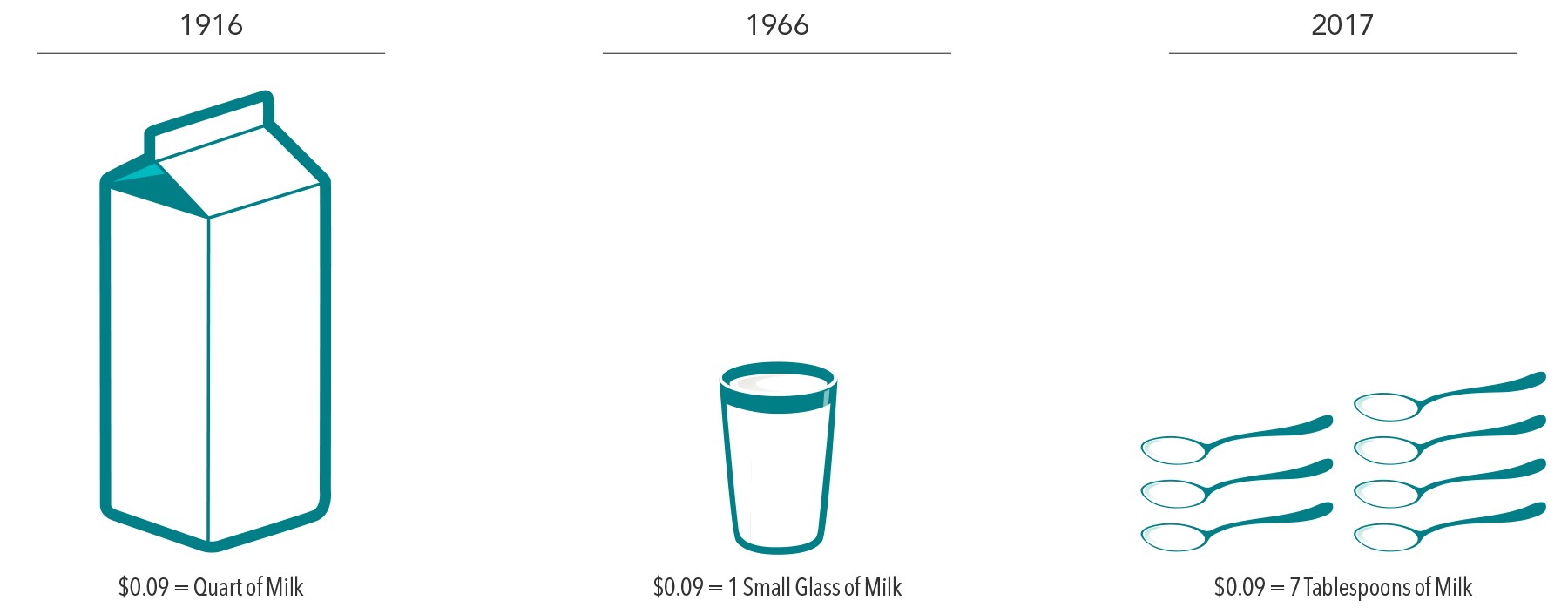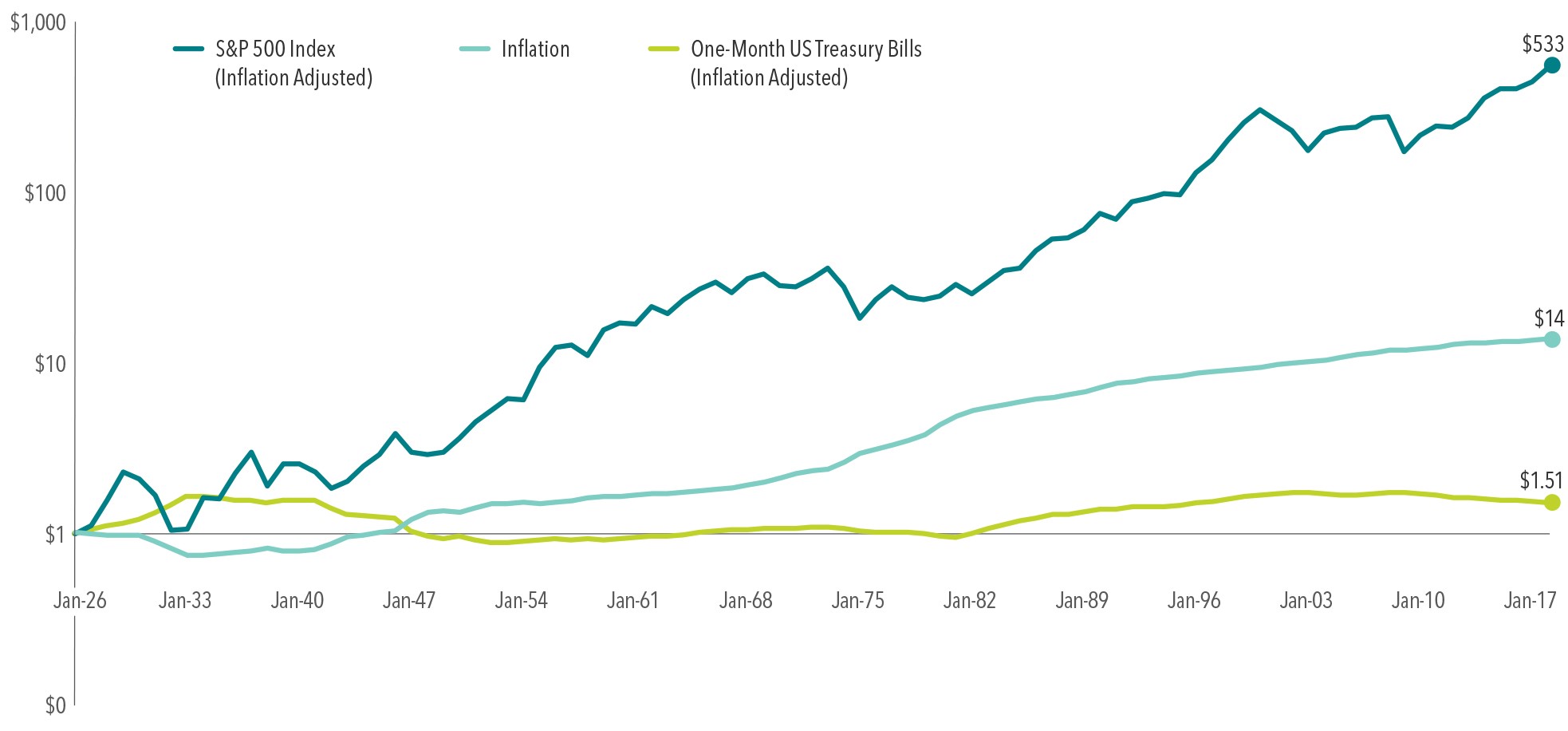By Jon Theriault, CFP®, CKA®, MBA
I was recently at Starbucks on a quiet Friday afternoon catching up on some e-mails when a large group of energetic young people arrived all at once. I happened to know a couple of the kids, so they had clearly walked over right after middle school. I still prefer to drink a simple black coffee, but as each of them ordered their more expensive beverages, I couldn’t help but reflect on just how expensive things have become in comparison to when I was their age. It made me wonder how much longer it will be until a regular cup of coffee costs $5 or more. And if history tells us anything, it won’t be too much longer.
There has been a lot of questions asked about the strength of our economy recently. The concept of inflation is always a component of the answer. Inflation is often felt but not discussed as it tends to gradually sneak up on consumers, yet it has a very important impact on all economies, large and small. In short, inflation can be defined as the erosion of real purchasing power over time and is therefore a key element to the purpose of investing. In many cases, the reason for saving today is to support future spending. Therefore, keeping pace with inflation is a crucial goal for many investors.
To help understand inflation’s impact on purchasing power, consider the following illustration of the effects of inflation over time. Just over 100 years ago, a quart of milk cost only nine cents. Fifty years later, the same nine cents allowed you to buy only a small glass of milk. And in today’s economy, nine cents would only get you approximately seven tablespoons of milk.
Exhibit 1. Your Money Today Will Likely Buy Less Tomorrow

In US dollars ($). Source: Dimensional Fund Advisors (DFA). Source 1916 and 1966: Historical Statistics of the United States, Colonial Times to 1970/US Department of Commerce. Source for 2017: US Department of Labor, Bureau of Labor Statistics, Economic Statistics, Consumer Price Index (CPI) — US City Average Price Data.
So how can someone potentially prevent this loss of purchasing power from inflation over time?
As the value of a dollar declines over time, a commitment to diversified investing can help grow wealth and preserve purchasing power. The long-term performance of stocks has historically outpaced inflation, but there have also been some short-term stretches where this has not been the case. For example, during the period from 1966 to 1982, the return of the S&P 500 Index was 6.8% before inflation, and after adjusting for inflation it was 0%. Additionally, if looking at the period from 2000 to 2009, the so-called “lost decade,” the return of the S&P dropped from –0.9% before inflation to –3.4% after inflation.
Despite occasional periods where stocks have failed to outpace inflation, one dollar invested in the S&P in 1926, after accounting for inflation, would have grown to more than $500 of purchasing power at the end of 2017. This increase would have significantly outpaced inflation over the long run. The story for ultra conservative investments such as US Treasury bills (T-bills), however, is quite different. In many periods, T-bills were unable to keep pace with inflation, and an investor would have experienced an erosion of purchasing power as can be seen in Exhibit 2 below.
Exhibit 2. Growth of $1 (1926-2017)

S&P and Dow Jones data © 2018 Dow Jones Indices LLC, a division of S&P Global. All rights reserved. Past performance is no guarantee of future results. Actual returns may be lower. Inflation is measured as changes in the US Consumer Price Index (CPI).
So, while investing in stocks and going through periods of volatility involves taking on risk in exchange for returns, volatility is not the only type of risk that should concern investors. Ultimately, many investors (and non-investors) should understand that by not taking on risk with their financial assets, it may be difficult to keep pace with inflation, which will impact their standard of living and purchasing power later in life.
In conclusion, inflation is an important consideration for all investors. By combining the right mix of growth and risk management assets, investors may be able to offset the effects of inflation, grow their wealth over time, and keep up with what will soon be $5 for a cup of coffee. RS Crum can help investors weigh the impact of inflation and other important considerations when preparing and investing for the future.

